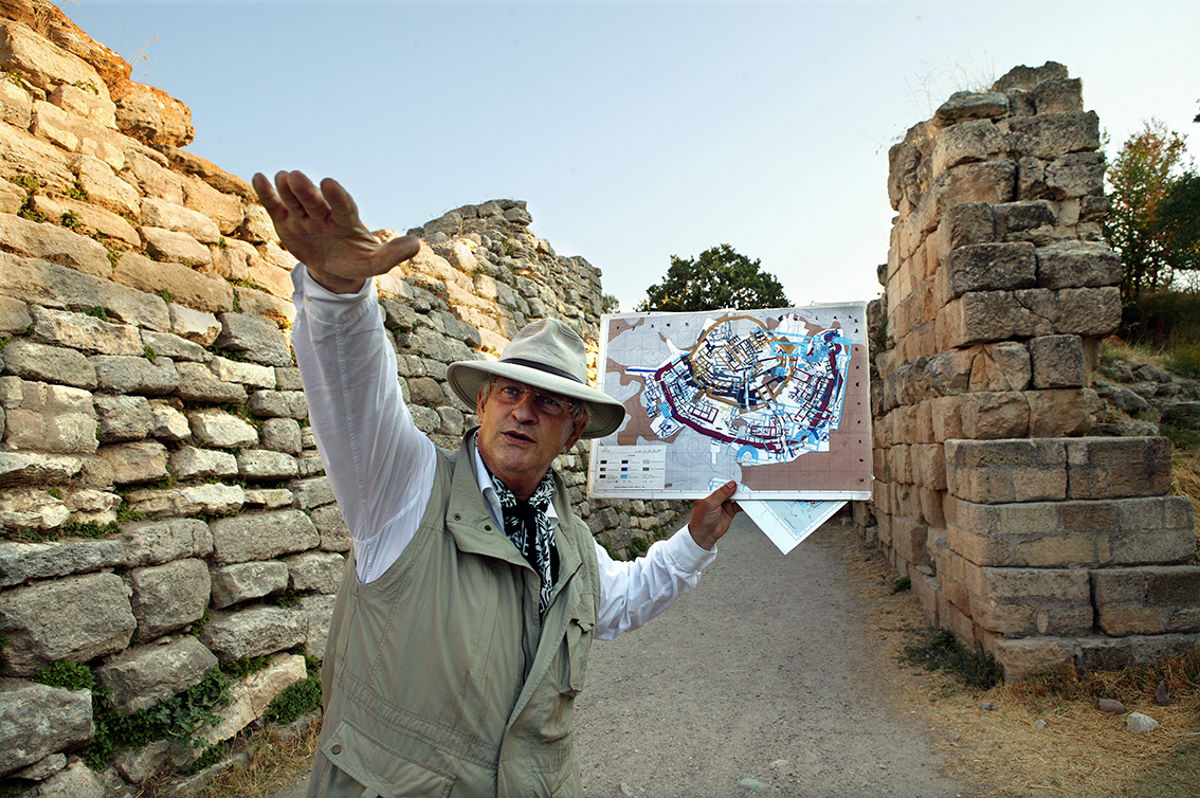
The excavations in 1863, and then Schliemann excavations since 1870 and especially the big excavation in 1871 did much damage to the settlement mound, known as Hisarlık (Troy). After Dörpfeld's excavations in 1893-94 and Blegen's excavations in 1932-38 no restoration or conservation work was undertaken and therefore the remains were in danger to become the ruin of a ruin. During these excavations many new informations were acquired, but the results were not always matching up with each other. In this dire situation Prof. Dr. Dr. h.c. Manfred Osman Korfmann from University of Tübingen started to excavate in 1988. The aims of his excavations were to solve the chronology problems previous excavations and to make the site more understandable for the public. Shortly, to prevent Troy to become or remain as a ruin. One of the main archeological questions of Korfmann was to show if there was a lower city of the Bronze Age, which he was able to prove. Up to his untimely death in 2005, Korfmann continued to excavate, to restore the monuments, to install information boards, and to create walking routes. For the first time Troy was safe to walk through and understandable for the public.
Troy and History of The Excavations
- 31 Who excavated Troy first?
- 32 How much of Troy has been excavated?
- 33 Which methods are used in the excavations?
- 34 In which layer was the “Priamos Treasure“ found?
- 35 Where is “Priamos Treasure“?
- 36 Are some written documents found in Troy excavations?
- 37 What was the reason of Korfmann's excavations?
- 38 What had changed the excavations of M. O. Korfmann?
- 39 Was Troy a trade center?
- 40 What would happen if Troy was not excavated?